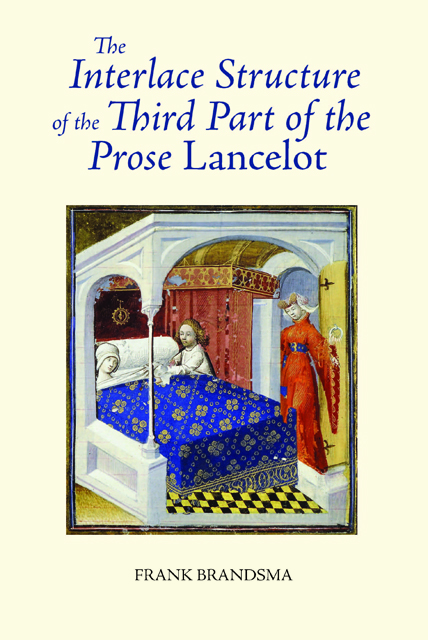Book contents
- Frontmatter
- Contents
- Dedication
- Preface
- Editorial Conventions
- List of Abbreviations
- Plot Summary of the Prose Lancelot and Vulgate Cycle
- 1 Introduction
- 2 Interlace: The Narrative Technique in Lancelot Part 3
- 3 Interlace: The Themes of Lancelot Part 3
- 4 Conclusion: Narration (Revisited) and the Audience
- Appendix 1 Survey of Prose Lancelot Manuscript According to (1) Date and (2) Contents
- Appendix 2 The Interlace of the Primary Narrative Threads in Lancelot Part 3
- Appendix 3 Reading Time
- Bibliography
- Index
4 - Conclusion: Narration (Revisited) and the Audience
Published online by Cambridge University Press: 18 February 2023
- Frontmatter
- Contents
- Dedication
- Preface
- Editorial Conventions
- List of Abbreviations
- Plot Summary of the Prose Lancelot and Vulgate Cycle
- 1 Introduction
- 2 Interlace: The Narrative Technique in Lancelot Part 3
- 3 Interlace: The Themes of Lancelot Part 3
- 4 Conclusion: Narration (Revisited) and the Audience
- Appendix 1 Survey of Prose Lancelot Manuscript According to (1) Date and (2) Contents
- Appendix 2 The Interlace of the Primary Narrative Threads in Lancelot Part 3
- Appendix 3 Reading Time
- Bibliography
- Index
Summary
Much remains unclear with regard to the making of Part 3 of the Prose Lancelot: we do not know who was responsible for the creation of the text in this phase of the genesis of the cycle, or for whom the tale was intended. The conclusion to the Queste mentions the alleged author Gautier Map († April 1, 1209 or 1210) and his patron, King Henry (the second, † 1189), but the chronological distance of these persons from the actual creation of the cycle in the first decades of the thirteenth century reveals that this is a fake. Naming this patron may indicate that the cycle was intended for an aristocratic audience, in England or on both sides of the Channel, but that is rather obvious from its content and manuscript tradition anyway.
Still, the contemporary audience and its reception of the text are interesting issues: the listeners must have understood and enjoyed the text, given its popularity (as deduced from the large number of manuscripts that have come down to us), and the text itself speaks to its audience occasionally in phrases like ‘si com vos avez oï’ [as you have heard]. Even though the real audience remains vague, the text itself may provide information on what the maker(s) expected of the intended audience. The competence of the implied audience is the issue in this final chapter, which also serves as conclusion since the topic rests firmly on what has been discussed (‘com vos avez oï’) in the previous chapters. Since we know very little about the actual performance and reception of texts like the Prose Lancelot, this final chapter will often suggest possibilities and speculate on how things could have been, without achieving definitive conclusions or any kind of certainty. It is intended to open up new perspectives and investigate new ways of looking at the text and its audience.
Interlace and the distribution of information
Telling a good story relies on the perfect mix of providing and withholding information to awaken and sustain the curiosity of the audience, as Chrétien de Troyes did so masterfully in, for instance, Le chevalier de la charrette.
- Type
- Chapter
- Information
- The Interlace Structure of the Third Part of the Prose Lancelot , pp. 200 - 227Publisher: Boydell & BrewerPrint publication year: 2010

